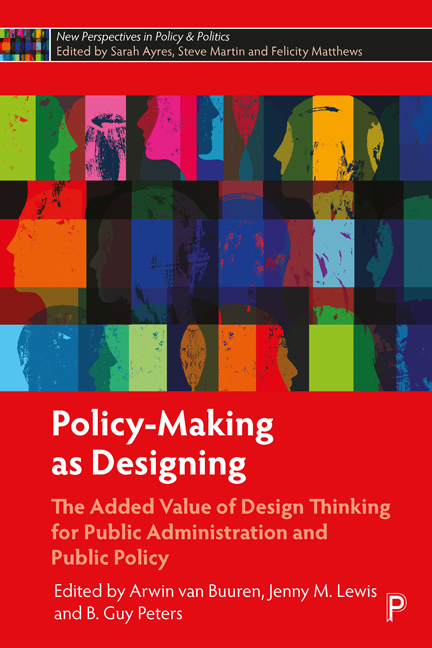 Policy-Making as Designing
Policy-Making as Designing Book contents
- Frontmatter
- Contents
- List of figures and tables
- Notes on contributors
- 1 Improving public policy and administration: exploring the potential of design
- 2 Applying design in public administration: a literature review to explore the state of the art
- 3 Challenges in applying design thinking to public policy: dealing with the varieties of policy formulation and their vicissitudes
- 4 Designing environments for experimentation, learning and innovation in public policy and governance
- 5 Policy Labs: the next frontier of policy design and evaluation?
- 6 When design meets power: design thinking, public sector innovation and the politics of policy-making
- 7 Designing institutions for designing policy
- 8 Applying design science in public policy and administration research
- 9 Using a design approach to create collaborative governance
- 10 Policy-making as designing: taking stock and looking forward
- Index
7 - Designing institutions for designing policy
Published online by Cambridge University Press: 20 January 2024
- Frontmatter
- Contents
- List of figures and tables
- Notes on contributors
- 1 Improving public policy and administration: exploring the potential of design
- 2 Applying design in public administration: a literature review to explore the state of the art
- 3 Challenges in applying design thinking to public policy: dealing with the varieties of policy formulation and their vicissitudes
- 4 Designing environments for experimentation, learning and innovation in public policy and governance
- 5 Policy Labs: the next frontier of policy design and evaluation?
- 6 When design meets power: design thinking, public sector innovation and the politics of policy-making
- 7 Designing institutions for designing policy
- 8 Applying design science in public policy and administration research
- 9 Using a design approach to create collaborative governance
- 10 Policy-making as designing: taking stock and looking forward
- Index
Summary
The formulation and subsequent implementation of public policy is inherently a design activity (Simon, 1969). Designing involves recognising the existence of a problem present within the economy and society, attempting to understand the dynamics operating within that problem, and then devising a putative solution. Policy design is both a process of conscious thinking about options for good policy and the outcome of that process (see Howlett and Mukherjee, 2018). Whether the design activity is implicit or explicit it still exists, and ultimately the manner in which the design occurs will affect the success, or lack thereof, of the policy that results from that policy-making.
A second premise, in addition to the perhaps obvious one that policymaking involves design, is that the institutions within which designing occurs will influence the type of designs which emerge, and also therefore affect the probabilities of success (leaving aside for the time being the meaning of success, but see Bohni et al, 2015) of the policy once designed. The various strands of reform in public administration, for example, may have had differential effects on the capacity to devise innovative and flexible approaches to policy. Throughout this chapter I will be demonstrating that the nature of designs and the institutions that perform the designing are closely connected.
The influence of institutions on policy appears to involve two questions about those institutions. The first is choice of the institution itself. Legislatures will design differently than will the public bureaucracy, and both will design differently from the courts if they were to become involved in the process. And all of those institutions may design differently from policy labs or other organisations created specifically to foster policy innovation. At this level there may, however, be little real choice given institutionalised patterns of making decisions within the public sector as well as the capacity of external actors to venue shop and find means of activating one institution or another to become engaged in policy design activities
Within institutions the structure and culture of the individual organisations will affect the manner in which designing takes place. We may posit that all bureaucracies involved in policy design will have some common characteristics, but there are also marked differences among versions of the bureaucracy that will affect their decisions about policy (see, for example, Cervantes and Radge, 2018).
- Type
- Chapter
- Information
- Policy-Making as DesigningThe Added Value of Design Thinking for Public Administration and Public Policy, pp. 151 - 170Publisher: Bristol University PressPrint publication year: 2023


